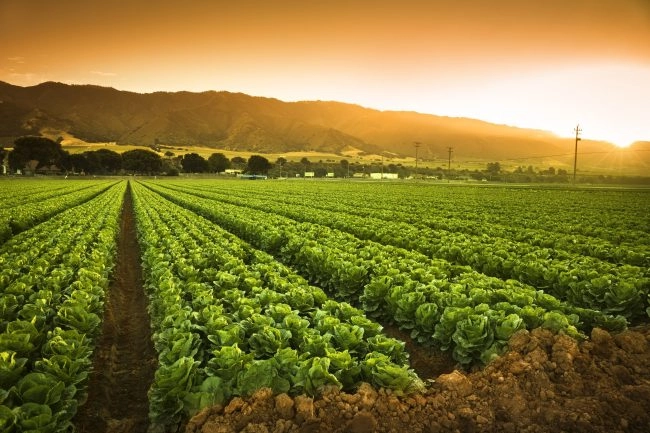Why you should practice generative agriculture
The truth is despite agriculture’s vital role in human civilisations over millennia, it has also contributed significantly to carbon emissions…

The truth is despite agriculture’s vital role in human civilisations over millennia, it has also contributed significantly to carbon emissions, exacerbating climate change. However, regenerative agriculture, which includes agroforestry techniques, can transform portions of the food production system into a carbon sink. Experts say that at its current rate of growth, by 2050 regenerative agriculture is estimated to reduce the amount of carbon dioxide in the atmosphere by 23.15 gigatons and is ranked one of the most impactful solutions for climate change.
I have always believed that nature-based solutions like agroforestry can adequately promote climate resilience and reduce carbon emissions. This is why I was overly excited when one of our companies in Kaduna, Nigeria embarked on an ambitious agroforestry project.
In 2019, we successfully set up a two-hectare agroforestry farm in Kaduna State, Nigeria. Intended as a pilot, this farm was established with 45 different varieties of tree crops, cash crops, food crops and ornamental crops. The reason behind using over 40 different varieties is to test out which crops would thrive, the synergies between crops and the economic returns of each variety. The pilot was set up in a way that farmers can be harvesting crops all year round from their agroforestry farms. After just three to four weeks of planting considerable amounts of vegetables like lettuce were harvested, proving the notion that through agroforestry, you could harvest food and other products throughout the year, in some cases weekly.
Agroforestry also offers huge opportunities in terms of job creation, our initial two-hectare pilot hired 15 full-time workers. The labour intensity is based on year-round harvesting periods, pruning and replanting of harvested crops. Although similar and equally successful agroforestry projects can be found around the world, never has this type of agroforestry system been set up in Nigeria for the purpose of combating climate change whilst serving as a source of food and income to farmers. Based on the success of this project, we quickly expanded the farm by about 18 hectares and grand plans are in motion to transform the agroforestry project into a 200-hectare agroforestry park.
- ISWAP bans farmers, fishermen from Borno LG amid NAF airstrikes
- Gov orders arrest of Ekiti APC chairman’s kidnappers
Our dream is that this project in Kaduna becomes a model agroforestry farm adapted to every climate zone and the environmental conditions of every state in Nigeria.
Agroforestry is a land management approach that combines agriculture and forestry practices, integrating trees and shrubs with crops or livestock. By strategically planting trees and incorporating them into agricultural systems, agroforestry offers numerous benefits that make it a sustainable solution for Nigeria’s agricultural sector. Agroforestry systems are highly effective at sequestering carbon dioxide from the atmosphere. Trees capture and store carbon, acting as a natural carbon sink. By implementing agroforestry practices, Nigeria can mitigate carbon emissions and contribute to global efforts in combating climate change.
It enhances soil health and fertility through various mechanisms. Tree roots improve soil structure, preventing erosion and nutrient runoff. Fallen leaves and organic matter from trees enrich the soil, promoting microbial activity and nutrient cycling. This results in improved soil fertility, reducing the need for synthetic fertilizers and enhancing long-term agricultural productivity.
Nigeria is blessed with rich biodiversity, but it is under threat due to deforestation and habitat degradation. Agroforestry systems provide habitat for a diverse range of flora and fauna, promoting biodiversity conservation. The presence of trees in agricultural landscapes attracts pollinators, beneficial insects, and birds, contributing to ecosystem balance and resilience.
Also, Nigeria’s agriculture is vulnerable to climate change impacts such as erratic rainfall patterns, droughts, and soil degradation. Agroforestry enhances climate resilience by improving water retention in the soil, reducing water stress for crops during dry periods. The shade provided by trees also helps mitigate temperature extremes, creating microclimates that benefit crops and livestock.
Agroforestry offers economic benefits to farmers by diversifying their income streams. Trees in agroforestry systems can provide timber, fruits, nuts, medicinal products, and other valuable non-timber forest products. These additional revenue sources can enhance farmers’ profitability and provide economic stability. It also has the potential to strengthen community resilience and promote sustainable development.
By incorporating agroforestry practices, communities can foster self-sufficiency in food production, reduce rural-urban migration, and create employment opportunities. Furthermore, knowledge sharing and capacity building related to agroforestry can empower farmers and strengthen local institutions.
To me and my partners as well as millions across the world who practice it, Agroforestry presents a compelling solution for Nigeria’s (and indeed the world’s) agricultural sector, enabling the transformation of farming systems into carbon sinks while improving resilience to climate change. By implementing agroforestry practices, Nigeria can sequester significant amounts of carbon dioxide, enhance soil health, preserve biodiversity, and foster economic opportunities for farmers. It is real, practicable and rooted in real science.
It goes without saying then that government support, policy incentives, and awareness campaigns are crucial to promoting its widespread adoption of agroforestry or at least various forms of regenerative agriculture, ensuring a sustainable and climate-resilient future for Nigeria’s agriculture.
